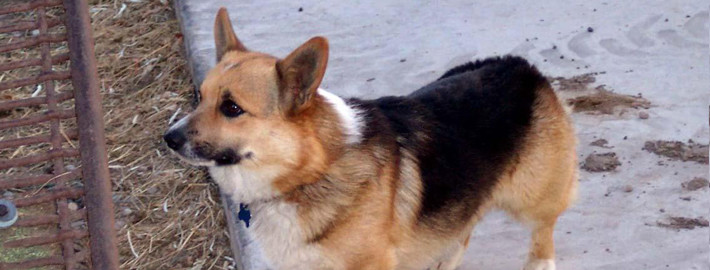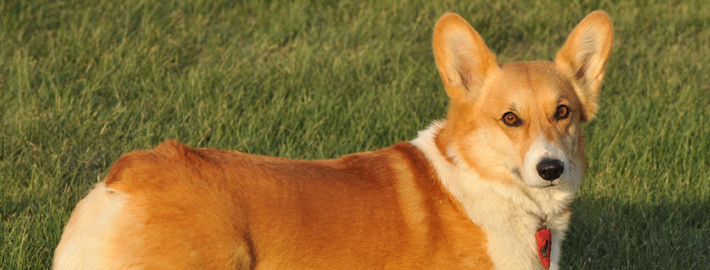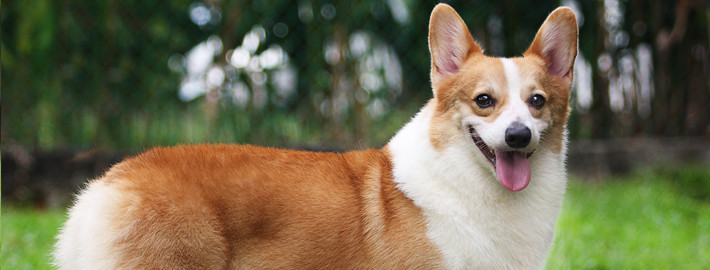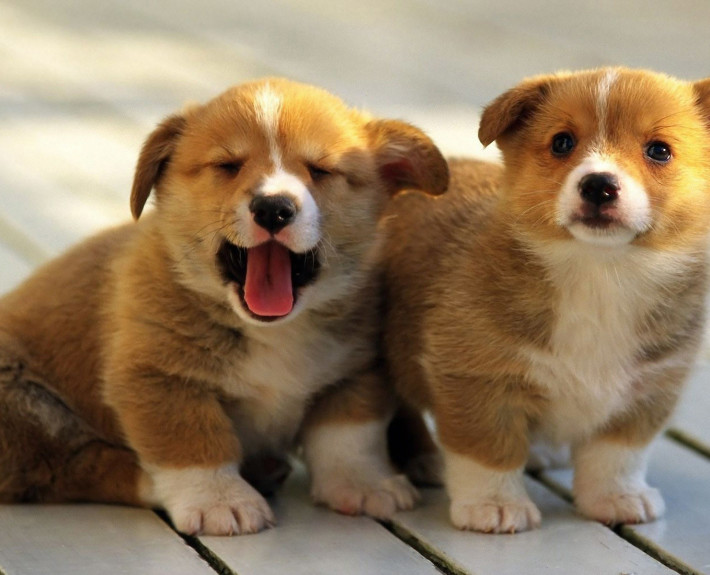What makes the Pembroke Welsh Corgi Unique?
As they are sociable dogs with a unique appearance, it is no wonder that Corgis have captured the hearts of fanciers throughout the world including the British Royal family.
Breed Groups
Page Contents
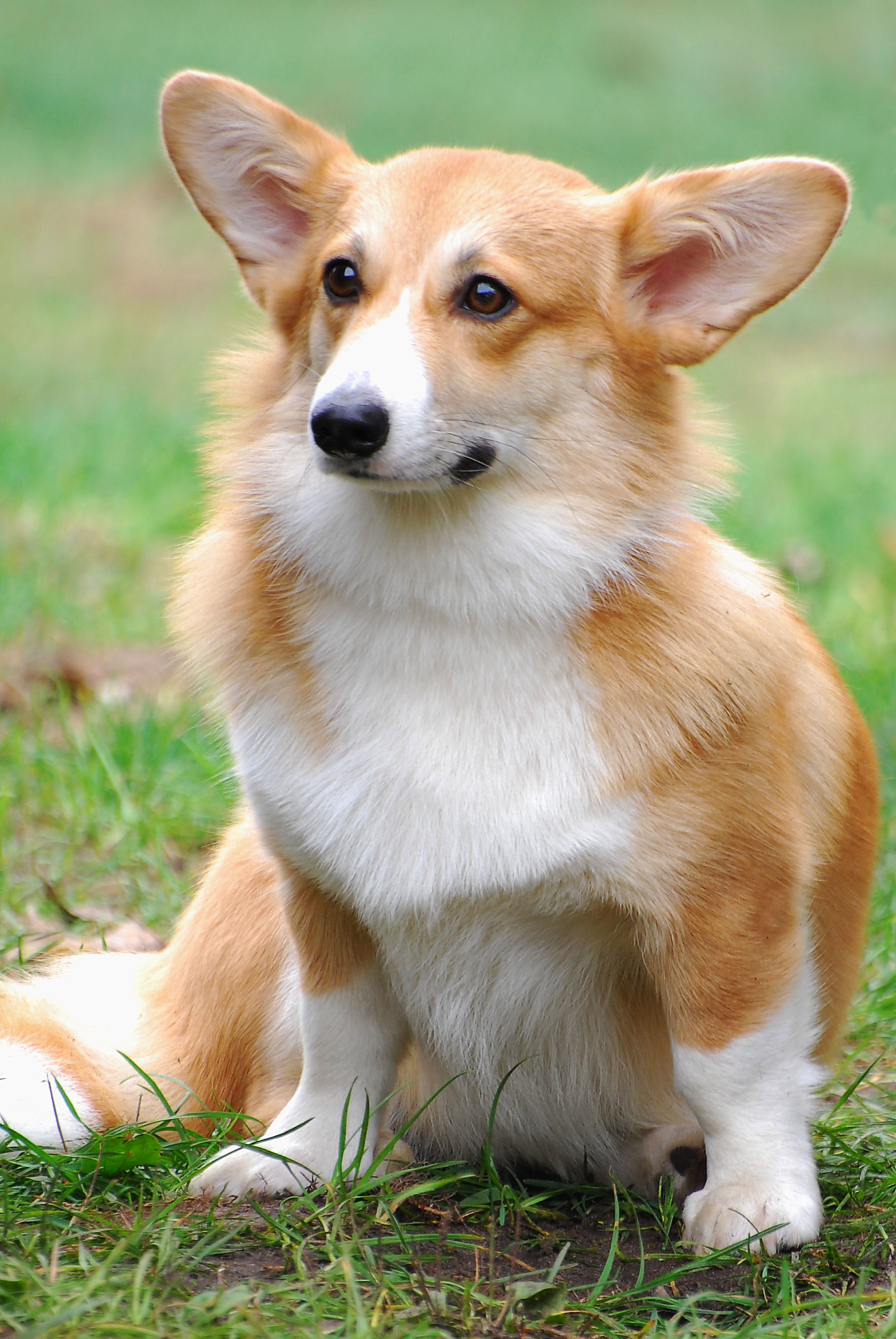
Is the Pembroke Welsh Corgi Right For You?
These dogs resemble plump dachshunds with upright ears. They have shortened legs and bodies that seem elongated. Pembroke Welsh Corgis often seem to have a mischievous expression in their brown oval-shaped eyes. are devoted to their families and will gladly follow their human owners wherever they happen to be going. These dogs make good, well-behaved companions for children because they love to play. However, members of this breed have been known to nip at youngsters’ heels when playing with them in attempt to herd them.
They quickly learn commands and are widely considered easy to train as a result of their people pleasing natures. Due to the fact that they are herding dogs and have a predisposition to chase after things, it is not a good idea to let members of this breed off their leashes. It is also best if they play in a safely fenced in area when they are not indoors.
In 5 Words
- Outgoing
- Bold
- Tenacious
- Playful
- Protective
Characteristics
Learn About the Pembroke Welsh Corgi
Description
General Description
These dogs resemble plump dachshunds with upright ears. They have shortened legs and bodies that seem elongated. Pembroke Welsh Corgis often seem to have a mischievous expression in their brown oval-shaped eyes. Black noses, wide skills, and a level top line are all features of this breed. These short dogs are agile and move with a fluid gait on their oval shaped feet. It is typical for their dewclaws to be removed.
Pembroke Welsh Corgis are also known for their bobbed tails, which is the main difference between this breed and the Cardigan Welsh Corgis as the latter has typically lengthy tails. Cardigan Welsh Corgis also stand straighter and are less lengthy than those of the Pembroke variety. They tend to be dark in hue and have larger features than their contemporaries.
In earlier historical periods, livestock herding dogs would have their tails docked short to show that they were working animal and subsequently exempt them from the tax on pets, but Pembroke Welsh Corgis are occasionally born without tails. However, it is currently illegal for most European owners to have their dog’s tail removed.
Size
Both male and females of this breed should stand between 10 and 12 inches at the withers or the shoulder blades. Female dogs average about 25 pounds in weight while their male counterparts weigh about 2 pounds more on average.
Coat
These dogs have a double coat comprised of a coarse outer layer and a dense weather resistant under layer. The outer layer is only somewhat longer than the inner one. A number of Corgis have longer coats but this is a deviation from the breed standards and these dogs aren’t allowed in the show ring. Acceptable coat colors for Pembroke Welsh Corgis include fawn, sable, red, and tricolored. White markings are also common on the necks, muzzles, chests, and legs.
Short History of the Pembroke
These small livestock herding dogs are native to Wales in the United Kingdom, where they have lived for about a thousand years. Pembroke Welsh Corgis are thought to have descended from the northern Spitz bloodlines. Due to the fact that “corgi” means “dog” in the Gaelic language it is thought that the breed has some Celtic ancestry. Or the breed’s name could have come from the Welsh language words “cur” and “gi”. Together the aforementioned combination would have loosely been translated as “dogs that watch over things”.
The breed’s most direct forebears were apparently the dogs of Flemish weavers who had settled in Wales at the king’s behest around the 1100s. These dogs were eventually crossbred sometime before the 1850s. The American Kennel Club recognized the breed as part of their herding group in 1934. About ten years later, Queen Elizabeth II was given her first Pembroke Welsh Corgi as a gift in honor of her 18th birthday. The dog named Susan made the future queen a lifelong breed fancier and she has owned over 30 Corgis over the course of her lifetime. This fact has attributed to the continued popularity of this breed in the United Kingdom.
Temperament
Pembroke Welsh Corgis are devoted to their families and will gladly follow their human owners wherever they happen to be going. These dogs make good, well-behaved companions for children because they love to play. However, members of this breed have been known to nip at youngsters’ heels when playing with them in attempt to herd them. This habit should be discouraged from an early age to prevent problems from arising. Despite their herding habits, Corgis are generally good with other pets. The breed also tends wary of strangers. They may need early socialization to understand the difference between an unfamiliar person or animal and one that is a threat. Excessive barking can be problematic for some Corgis. As a result, this breed does better on farms and in rural areas than they will elsewhere. However, with adequate exercise and mental stimulation, these dogs should be alright in city environments.
Caring for Your Pembroke Welsh Corgi
General Health
Living about 13 years on average, the Pembroke Welsh Corgi is often born in litters of 6 puppies. As with any breed, these dogs have some health concerns that owners need to keep in mind. Older dogs that are also overweight may suffer from afflictions of their backs. Other ailments of the skeletal systems and eyes are similarly common. Therefore, it is a good idea to have pets regularly tested for glaucoma and progressive retinal atrophy to head off any difficulties that may arise. If one plans on obtaining a dog from a breeder, it is always best to make sure that the parents have been screened and tested negative for any serious health problems.
Care
Daily
Pembroke Welsh Corgis must have plenty of exercise to keep them from engaging in destructive behaviors. A lengthy walk or an extensive play session is recommended for this breed on a daily basis.
Weekly
It is a good idea to brush these dogs at least once a week and cleanse their teeth regularly as well.
Monthly
In order to keep parasites from taking up residence on one’s pet, it is a good idea to administer flea, tick, and heartworm prevention medicines every month.
Grooming & Bathing
These dogs shed their coats twice a year but will only need to be bathed when they are dirty.
Exercise & Training
According The Intelligence of Dogs list that was created by Stanley Coren, the Pembroke Welsh Corgi is the 11th smartest dog in the world. They quickly learn commands and are widely considered easy to train as a result of their people pleasing natures. Due to the fact that they are herding dogs and have a predisposition to chase after things, it is not a good idea to let members of this breed off their leashes. It is also best if they play in a safely fenced in area when they are not indoors.

